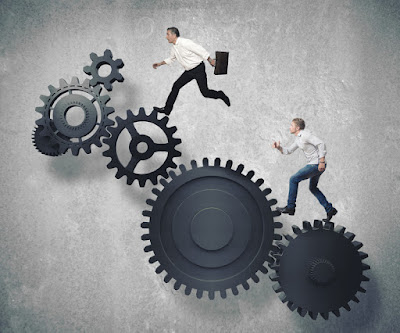Vizio got in trouble with the FTC this week and had to pay $2.2 million to settle charges around having monitored the viewing habits on more than 11 million TVs without consent over the course of two years.
The main problem was that Vizio TVs had tracking features turned on by default, instead of an opt-in setting like many other manufacturers use (and, as you’ll see, sometimes hide or trick you into accepting). Newer Vizio TVs that run the company’s SmartCast system have the tracking turned off by default.
It was a bad practice that people had been complaining about for years — a possible class action lawsuit was even filed in 2016 — but the situation is now a relatively good one for Vizio TV owners: the company is specifically prohibited from tracking your viewing habits without explicit permission.
For people who own other TVs and streaming boxes, it might still be a different story. Those devices are very likely still tracking your TV habits in one way or another, and they probably aren’t as clear about it as Vizio now has to be.
Here’s what you do and don’t need to worry about if you don’t want your TV tracking you.
WHAT HAS VIZIO BEEN TRACKING?
Vizio has been collecting some fairly personal data. The company’s TVs are able to track what you watch on a second-by-second basis, whether you’re watching cable, playing a Blu-ray, or streaming a movie, according to the FTC.
That data is then paired with demographic details on you. That includes “sex, age, income, marital status, household size, education, home ownership, and household value.” The information is then sold to analytics and ad companies and used to target advertisements to you. This is something Vizio has been excited about: the data service, branded Inscape, was a key piece of the company’s IPO pitch to investors before the company agreed to sell itself to LeEco last year.
OTHER SMART TVS (AND STREAMING BOXES) DO THE SAME THING
In 2015, The Wirecutter took a really thorough look at the privacy policies for popular TVs and streaming devices, and it found that most are tracking you in one way or another — and they don’t all offer an option to opt out. Though it’s now a little over a year since the article was published, most of the information still appears to be current; it’s worth checking out if you want specific details on your devices.
YOU CAN TURN OFF MOST SMART TV TRACKING
Here’s how for some of the top TV brands:
- Samsung: Samsung has an opt-in tracking service, called SyncPlus, that may have been turned on when your TV was set up. CBS Newssays the option to disable it is located in the settings menu, hidden inside the “Terms & Policy” section.
- LG: It sounds like LG’s newer, webOS-based TV sets don’t have tracking enabled. But older LG smart TVs have a service, called LivePlus, that may have gotten enabled when you set up the TV. To turn it off, go to Settings → Smart TV settings and then disable LivePlus.
- Sony: Wirecutter says that Sony also tries to enable a tracking service during the TV’s setup. It can be disabled inside the TV’s Help menu, under “Privacy Settings.” Doing so may disable some built-in recommendation features that rely on view tracking.
There are a lot of smart TVs out there and a lot of different names for their tracking features. If you own another brand’s smart TV, you can usually check the company’s privacy policy online; if there’s a section about advertising or recommendations, chances are there’s a tracking feature built in.
THE SITUATION MIGHT GET BETTER
In its settlement with the FTC, Vizio agreed to begin making its tracking notices much clearer. Future notices have to:
- Be presented on their own — so they can’t be buried in “terms of service” pages
- “Prominently disclose” what’s being tracked, what’ll be shared with third parties, who those parties are, and why it’s being shared
- Require the consumer to specifically agree to opt in
- Provide instructions on how to later opt out
This isn’t a legal standard — this is just something Vizio is held to because it messed up. But if other companies are worried about getting in trouble with the FTC, they now have a set of guidelines they can follow to make sure they get along without any problems. If we’re lucky, more TV manufacturers will begin following these guidelines, since they ought to make tracking settings much clearer.
The Wirecutter points out that, at this point, the situation is better and more transparent for Vizio owners than for anything else:






























